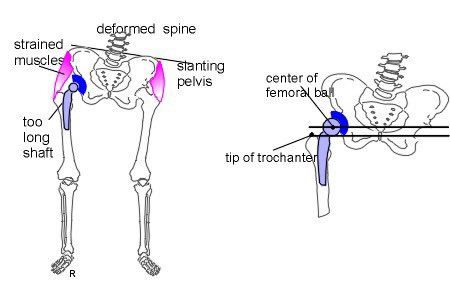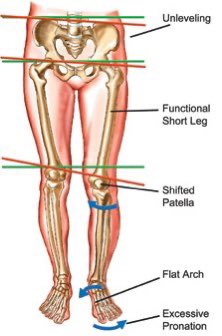A thread on leg length discrepancies and how they affect performance
This is very common. Several studies show this is exists in >90% of people (Korpelainen et. al, 2001, Lawrence, 1984).
It’s often a compensatory orientation that is driven by asymmetries getting out..
(1/6)
This is very common. Several studies show this is exists in >90% of people (Korpelainen et. al, 2001, Lawrence, 1984).
It’s often a compensatory orientation that is driven by asymmetries getting out..
(1/6)
control. The often causes the pelvis on the longer leg to be more posteriorly tilted and anteriorly tipped on the shorter leg.
This can be detrimental to performance if left unmanaged.
The longer leg forces the foot into longer ground-contact times and https://abs.twimg.com/emoji/v2/... draggable="false" alt="⬆️" title="Upwards arrow" aria-label="Emoji: Upwards arrow"> pressure on..
https://abs.twimg.com/emoji/v2/... draggable="false" alt="⬆️" title="Upwards arrow" aria-label="Emoji: Upwards arrow"> pressure on..
(2/6)
This can be detrimental to performance if left unmanaged.
The longer leg forces the foot into longer ground-contact times and
(2/6)
the plantar fascia and Achilles.
The shorter leg has a longer distance to “fall” during late swing phase, so the individual may overly strain the lateral hip abductors in order to more slowly lower the leg to the ground. This can also cause poor ground-reaction forces..
(3/6)
The shorter leg has a longer distance to “fall” during late swing phase, so the individual may overly strain the lateral hip abductors in order to more slowly lower the leg to the ground. This can also cause poor ground-reaction forces..
(3/6)
which will inhibit the ability to be quick off the ground. This is a factor in stress fractures in runners (Korplelainen et. al, 2001).
A study by Tallroth et. al 2005 shows that discrepancies of more than 1 cm have higher chances of plantar fasciitis and low back pain.
(4/6)
A study by Tallroth et. al 2005 shows that discrepancies of more than 1 cm have higher chances of plantar fasciitis and low back pain.
(4/6)
The patella on the short leg can also shift laterally & cause the tibia to compensate into internal rotation, causing excessive pronation & therefore poor propulsion on the short side leg as well.
This thread helps explain that asymmetries need to be managed if there’s..
(5/6)
This thread helps explain that asymmetries need to be managed if there’s..
(5/6)
dysfunction present. If the leg length discrepancy is excessive (likely >1.6 cm difference), then we probably need to intervene with a physical therapist to help minimize injury risk.
This is not something S&C coaches should treat, but we should definitely be aware of it.
(6/6)
This is not something S&C coaches should treat, but we should definitely be aware of it.
(6/6)

 Read on Twitter
Read on Twitter
 pressure on..(2/6)" title="control. The often causes the pelvis on the longer leg to be more posteriorly tilted and anteriorly tipped on the shorter leg.This can be detrimental to performance if left unmanaged.The longer leg forces the foot into longer ground-contact times and https://abs.twimg.com/emoji/v2/... draggable="false" alt="⬆️" title="Upwards arrow" aria-label="Emoji: Upwards arrow"> pressure on..(2/6)" class="img-responsive" style="max-width:100%;"/>
pressure on..(2/6)" title="control. The often causes the pelvis on the longer leg to be more posteriorly tilted and anteriorly tipped on the shorter leg.This can be detrimental to performance if left unmanaged.The longer leg forces the foot into longer ground-contact times and https://abs.twimg.com/emoji/v2/... draggable="false" alt="⬆️" title="Upwards arrow" aria-label="Emoji: Upwards arrow"> pressure on..(2/6)" class="img-responsive" style="max-width:100%;"/>




